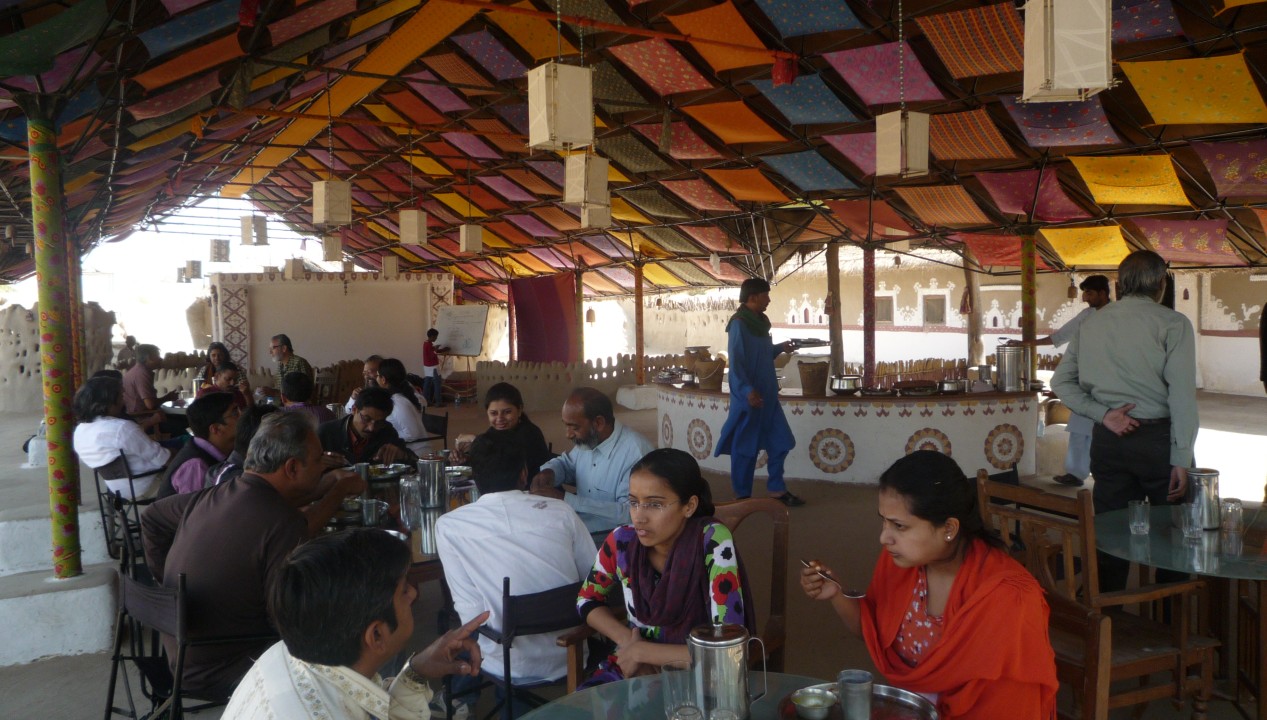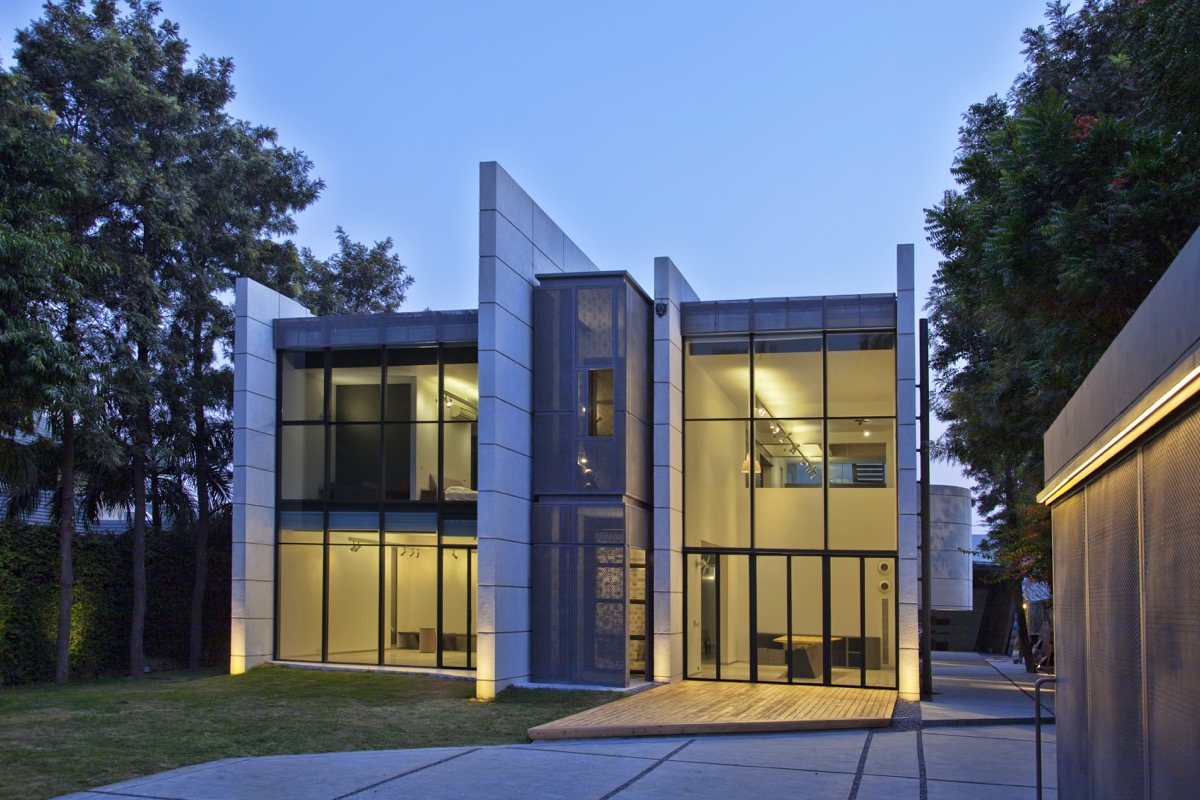
Project Facts
Location : Delhi
Name of Client : Undisclosed
Principal Architect : Akshat Bhatt
Design Team : Chitrang Jha, Nishant Malhotra
Total Cost : 5 crore
Site Area : 14000 sq. ft.
Built-Up Area : 8500 sq. ft.
Start Date : May 2013
Completion Date : January 2015
Photographer : Jeetin Sharma
If meaningful design is about the essence of things and eventually about reduction, this bungalow is a distinctive statement on a 2000 square yards’ block. This house typically stands as a tribute to the 70s Indian modernism and its exemplary style and beauty make it a masterpiece. It is an extremely interactive home for a close-knit joint family, one that cooks & dines together. The architecture of this house is such that the space embraces their roots and is progressive at the same time. The experience in plan & section is that of an open space, but that space has been planned in a way that it is interactive yet offers privacy.
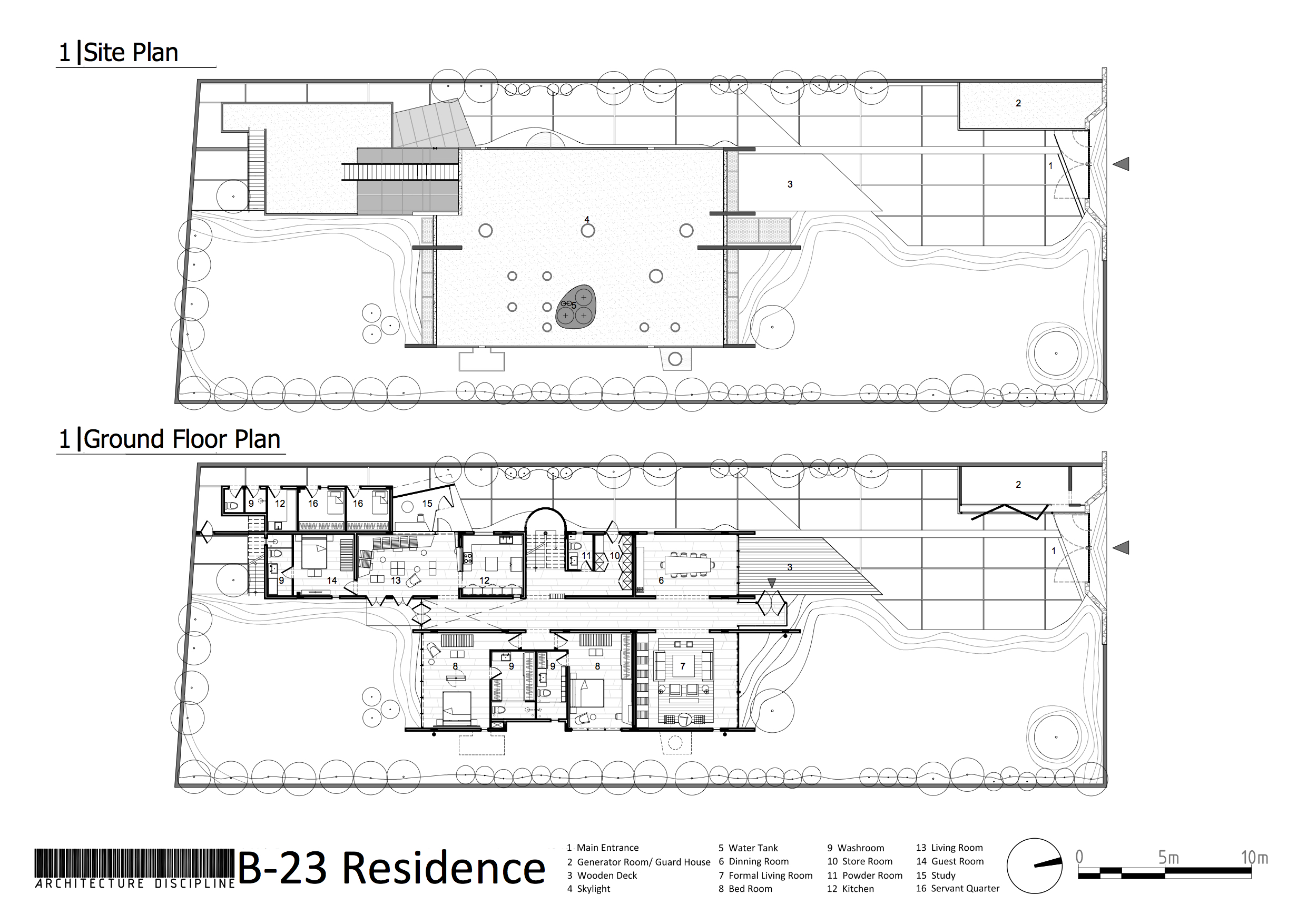
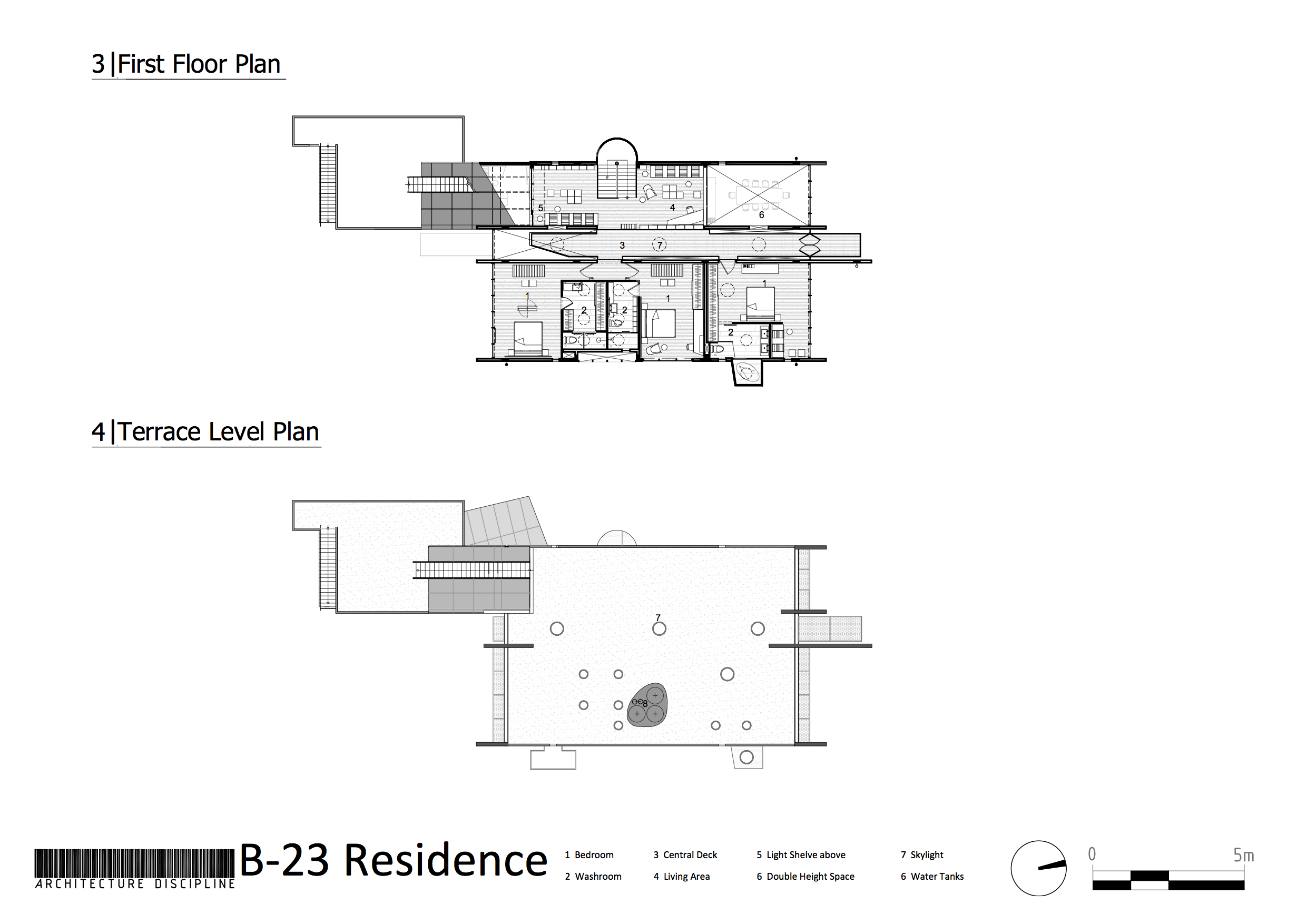
The components at site are completely acquired from or around the area and nothing has been pre-fabricated. All the work is presented according to the need and preference and in its very embryonic form, except for the furniture that has been exceptionally designed. Very few factory bought components have been used in this building.
In the name of style, the basic important needs have not been compromised with. The house uses heat reflective glass, and the stone used was primarily developed first-hand, then tried in the market and was applied on site. The washed stone aggregate on the exterior walls is a thermocouple fixed to a cavity wall and is an effective insulator, and was cast in-situ. Lots of skylights at calculated angles bring in natural light, to color the space orange in the mornings & evenings.
In the living area, the staircase terminates at the first floor to open that level completely. The study overlooks the dining area but the masonry parapet gives privacy. At the other end, a traditional railing/balustrade under a sloping roof encourages interaction. The floor and walls are white mosaic with crushed shells for a velvet sheen. The stone is cast-in-situ mosaic which was prepared by using crushed Mother Of Pearl extracted from oysters, collected from local vendors. The house also enthrals with its waste wood flooring that is environment friendly and aesthetic. The furniture is made up of modular magnetic components, completely reconfigurable and flexible which allows the possibility of change in colour configurations and arrangement. The mats are strikingly alluring which add a playful touch to whole décor, and are inspired from Thai floor cushions.
The need for flexibility and re-densification of furniture at residences was acknowledged; for a formal living space which needs to accommodate many more people during festive occasions, one may choose to use their living space in different ways – hence the house was designed in a manner such that the aesthetic feel of the house can be unified yet tweaked for colour distribution and arrangement. In terms of construction, every half cylinder is a module, as are the triangular extrusions that form back rests and cushions. Modules are unified on another level on perforated steel plates, which are held down on painted timber platforms. The magnets are embedded within the platforms. These are fairly strong and don’t shift by the weight of human beings, and require a twisting motion to move. The modular coffee tables are cuboids of varying heights and different finishes which serve different functions like a wine rack, a magazine store, a pouffe. These can also be reconfigured in modules and they too have magnets embedded within their size to bond with the other units. The side tables have modular drawers – some act like power banks and others can be used for storage. Everything is configured such that once attached, there is a magnetic shield so that it does not damage electronic devices or stop mechanicals watches.
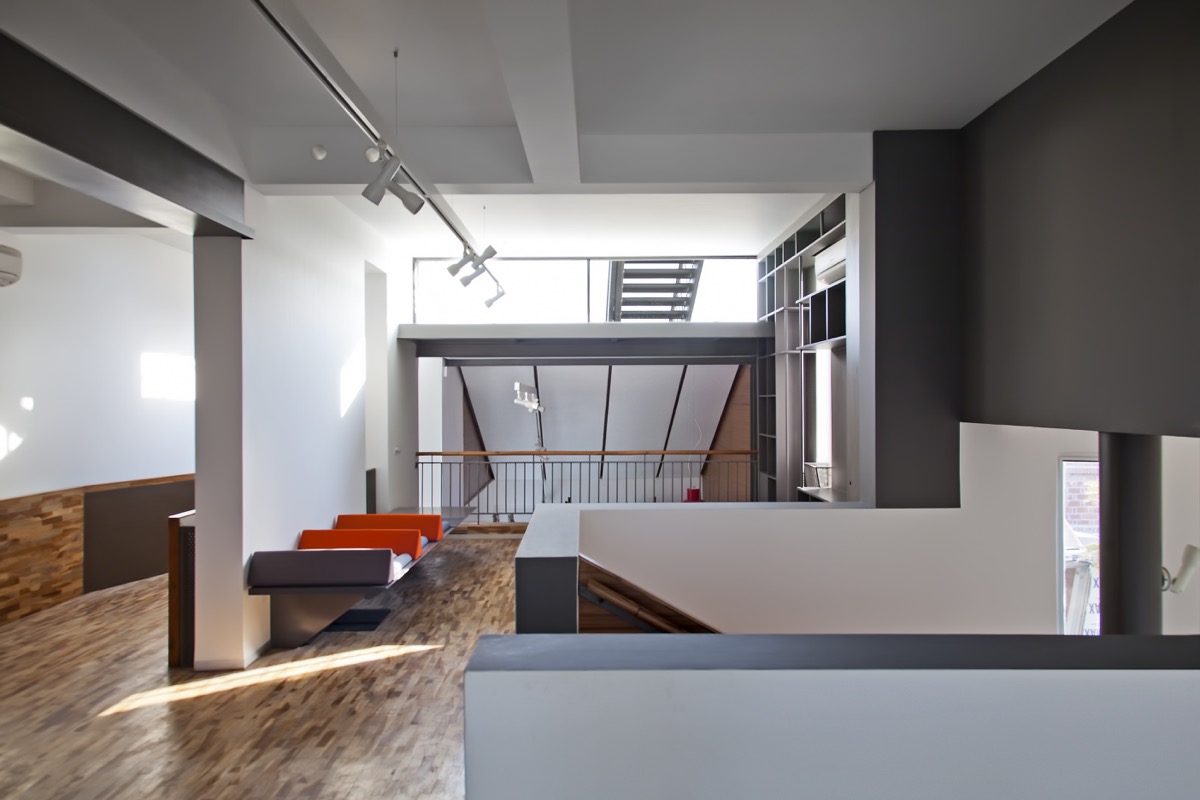
The house appears to be transparent but provides volumes of privacy and levels of interactivity for the family. The curious entrance is like a ‘jharokha’, which offers privacy at the doorstep and encourages the family to leave this open for cross ventilation. At the back of the house, the kitchen opens up to a skylight. The light seeps into various places like the washrooms and living spaces too, as per the movement of sun during daytime – the ambient lights used inside the house go along with their own rhythm, and react in accordance with the natural light. It is a perfect amalgamation of an edgy architectural design along with the minutely fulfilled basic comfort.

With a public garden in the front and one private garden at the back, visual access to the public is restricted. The balcony is inhibited to one overhang – that is at the back, just above the garden – to encourage residents to visit more often. The glass panels are placed facing north, so as to avoid direct heat gain. Also, the minimum possible heat gain is negated too, because of the appropriately used specified glass. The house looks as modern and contemporary from the outside as it is comfortable and cosy from the inside.
CONSULTANTS
Structural : Isha Consultants Pvt. Ltd., Project Lead: VP Aggarwal
Landscape : Architecture Discipline
Lighting & Electrical : Lirio Lopez, Project Lead: Linus Lopez
HVAC : Daikin
Civil : Isha Consultants Pvt. Ltd., Project Lead: VP Aggarwal






























